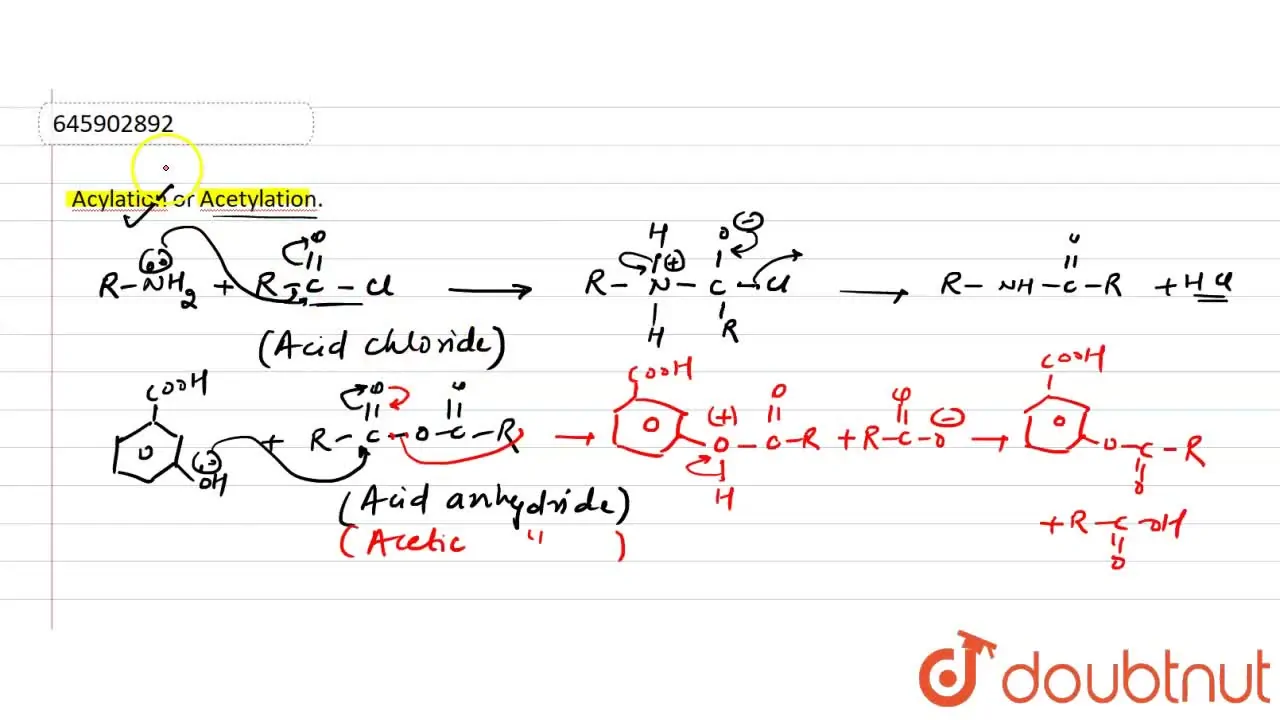Acylation or Acetylation.
The replacement of an active hydrogen atom of alcohols, phenols or amines with acyl (RCO or ArCO) group to form the corresponding esters or amides is called acylation. Acylation is usually carried out by using acid chlorides or anhydrides in presence of a base like pyridine or dimethylaniline, stc. Although in principle, any acid chloride or anhydride can be used for acylation however, acetyl chloride and acetic anhydride are the common reagents.
(i) In alcohols. It is usually carried out in presence of a base such as pyridine, dimethylaniline, etc. For example,
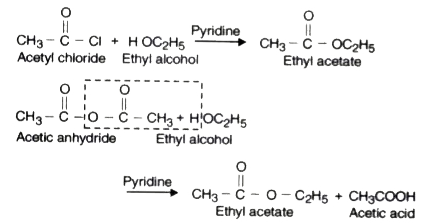
(ii) In phenols. Acetylation of phenols with acetyl chloride is usually carried out in presence of a base anhydride may be catalysed both by acids (a few drops of conc. H2SO4) and bases (sodium acetate, pyridine, etc.). For example,
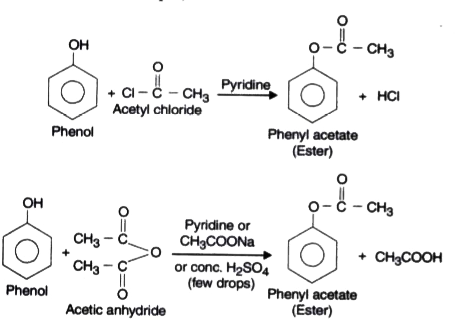
(iii) In amines. Since aliphatic amines themselves are bases, the acylation of aliphatic amines is usually carried out in absence of a base. For example,
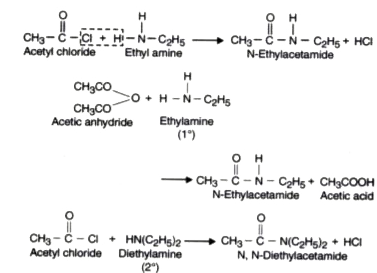
Tertiary amines (3∘) do not react due to the absence of replaceable hydrogen on nitrogen.
Since aromatic amines are less basic and hence less nucleophilic, their acetylation is usually carried out in presence of a catalyst. Whwrwas acetylation with CH3COCl is carried out in presence of pyridine, acetylation with acetic anhydride is carried out in presence of CH3COOH or a few drops of conc. H2SO4.
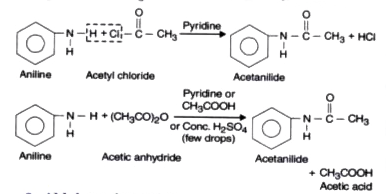
Related Playlists
Similar Questions
Poly substitution is a major drawback in
(a)Reimer Tiemann reaction
(b)Friedel Crafts acylation
(c)Friedel Crafts alkylation
(d)acetylation of aniline.View SolutionEthyl amine o acetylation gives
View SolutionIn sulphonation, acylation and formylation of benzene the group of effective electrophiles would be :
View SolutionIllustrate the following with an example : Acetylation reaction.
View SolutionDescribe the following
i. Acetylation
ii. Cannizzaro reactionView SolutionIn the sulphonation, acetylation and formylation of benzene the group of effective electrophiles would be ?
View SolutionIn Friedel-Crafts acylation reaction the electrophile is :
View SolutionAcetylation of salicylic acid produces
View Solution
Friedel-Crafts acylation reaction can be used to obtained the compoundsView Solution
Friedel-Crafts acylation reaction can be used to obtain the compoundsView Solution

